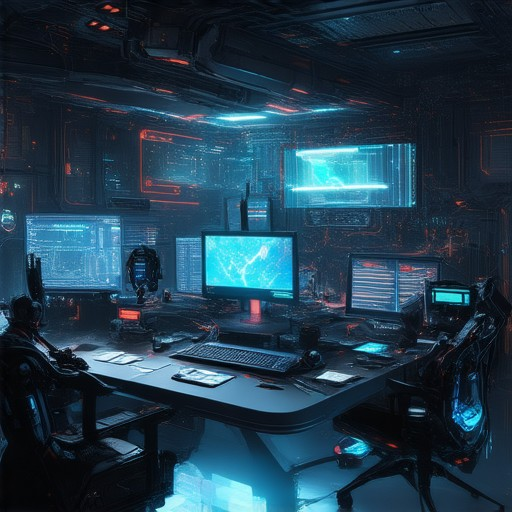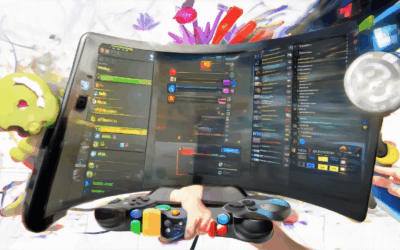Creating challenging game experiences has long been a cornerstone of the gaming world, capturing the hearts of players who thrive on adversity and triumph. Whether it’s mastering a puzzle, overcoming insurmountable odds, or navigating complex scenarios, the ability to craft engaging challenges is what sets great games apart. For aspiring developers and designers, the task of designing such experiences requires a meticulous balance of creativity, strategy, and technical expertise. From daily challenge solitaire to competitive multiplayer scenarios, the art of creating game challenges is both a science and an art form. This guide delves into the intricacies of game design, offering step-by-step insights into how to create challenging experiences that keep players hooked. We’ll explore everything from balancing difficulty levels to leveraging game engines, ensuring your designs stand out in a crowded market. By understanding the principles of creating challenges, you’ll unlock the potential to craft games that not only entertain but also foster a sense of achievement and competition among your players.

How to Make a Game More Challenging
To enhance the challenge of a game, consider implementing the following strategies:
- Difficulty Curve : Design the game to start at an accessible level and gradually increase in difficulty. This ensures players stay engaged without feeling overwhelmed initially.
- Enemy Variety : Introduce diverse enemies with unique attack patterns and weaknesses. This forces players to adapt their strategies, adding complexity.
- Environmental Hazards : Incorporate obstacles or hazards that appear based on in-game actions, requiring players to navigate carefully.
- Mistake Punishment : Implement consequences for errors, such as losing progress or having to restart, encouraging better decision-making.
- Permadeath Mode : Offer a mode where mistakes are irreversible, heightening the stakes and player caution.
- Time Pressure : Add time limits or resource management elements to introduce urgency and strategic planning.
- Riddles and Puzzles : Include challenges that require creative problem-solving, rewarding players with satisfaction upon solution.
- Adaptive AI Opponents : Create AI enemies that evolve their tactics based on player behavior, providing dynamic and unpredictable challenges.
- Competitive Multiplayer : Integrate multiplayer modes where players compete against others, adding a social layer and motivation through leaderboards.
- Progression System : Develop a system that rewards skill improvement, allowing players to track and celebrate their growth.
By thoughtfully applying these strategies, you can create a game that is both challenging and enjoyable, keeping players engaged and motivated.
How to Create Your Own Game
Creating your own game is an exciting journey that requires creativity, passion, and dedication. Below is a step-by-step guide to help you navigate the process from concept to completion.
1. Choose Your Genre
Start by selecting the genre that aligns with your interests and strengths. Popular genres include:
- Action-Adventure
- Puzzle
- Strategy
- Role-Playing Game (RPG)
- Fighting
- Sports Simulation
2. Learn the Basics of Game Development
Master the fundamental concepts of game development. Consider taking online tutorials or courses to gain proficiency in:
- Game Engines (e.g., Unity, Unreal Engine)
- Game Design Principles
- Scripting Languages (e.g., C#, JavaScript)
- Asset Creation (e.g., textures, models, sounds)
3. Develop a Unique Concept
Brainstorm creative ideas and develop a unique concept that stands out. Consider the following:
- Storyline and Characters
- Game Mechanics
- Unique Selling Points (USPs)
- Target Audience
4. Plan Your Game Structure
Outline the game’s structure, including:
- Levels/Acts/Chapters
- Progression System
- Objective and Challenges
- Gameplay Loop
5. Start Developing
Begin using your chosen game engine and start developing core features. Key steps include:
- Setting Up the Environment
- Implementing Basic Gameplay Mechanics
- Creating Characters and Enemies
- Designing Levels and Environments
6. Art and Design
Create visually appealing art and design elements. Tools you can use include:
- Photography and Digital Art Software (e.g., Adobe Photoshop, Blender)
- Free Asset Creation Tools (e.g., Unity Asset Store)
- Custom Sprites and Textures
7. Programming
Write scripts to handle game logic, animations, and interactions. Common languages used include:
- C# (for Unity)
- JavaScript (for Web-based Games)
- Python (for Experimental Projects)
8. Testing and Iteration
Playtest your game regularly to gather feedback and identify bugs. Iterate on your design based on player input and analytics.
9. Launch Your Game
Once your game is ready, publish it on platforms like Steam, itch.io, or mobile app stores. Consider the following:
- Marketing Strategy
- Community Building
- Post-Launch Support
10. Monetization
Decide on a monetization strategy that aligns with your game’s content and audience. Options include:
- Freemium Model
- Pay-to-Win
- One-Time Purchase
- Subscription Model
11. Stay Updated and Inspired
Keep up with the latest trends and technologies in game development. Attend conferences, follow industry blogs, and experiment with new ideas.
12. Network and Collaborate
Join game development communities to connect with fellow developers, seek feedback, and explore collaboration opportunities.
By following these steps, you can create a game that reflects your vision and resonates with your target audience. Remember, persistence and continuous learning are key to your success!

How Do You Make Challenges?
Creating challenges involves setting clear objectives, engaging audiences, and providing opportunities for growth or fun. Here’s a step-by-step guide:
- Define the Purpose: Clearly outline what the challenge aims to achieve, whether it’s learning a skill, solving a problem, or fostering creativity.
- Set Clear Guidelines: Establish rules and expectations to ensure participants understand the scope and boundaries of the challenge.
- Engage Your Audience: Use platforms like social media, forums, or newsletters to promote the challenge and gather participants.
- Provide Resources: Offer tools, templates, or training materials to help participants succeed.
- Monitor Progress: Regularly check in with participants to offer support and keep them motivated.
- Evaluate Outcomes: After the challenge ends, analyze the results to identify strengths and areas for improvement.
- Celebrate Successes: Recognize and reward participants who meet or exceed the challenge requirements.
- Document the Process: Share experiences, lessons learned, and success stories to inspire future challenges.
- Promote Feedback Loop: Gather participant feedback to refine future challenges and ensure they remain meaningful and engaging.
- Stay Flexible: Be open to changes and willing to adapt the challenge based on participant needs and feedback.
For more tips and resources on creating effective challenges, visit Indie Dev Games and explore their comprehensive guides for game developers.

Challenges in Gaming
Challenges in gaming encompass a variety of obstacles that players encounter while engaging with different games. These challenges can be categorized into several types, each presenting unique difficulties for players to overcome.
1. Gameplay Mechanics
One of the primary challenges in gaming is mastering complex gameplay mechanics. Many modern games introduce intricate systems, such as real-time strategy (RTS), role-playing games (RPG), or sandbox games, which require players to learn and adapt to new rules. Players often face challenges like managing resources, executing precise strategies, or navigating vast open worlds.
2. Player Skills
Challenges in gaming frequently test a player’s skill level. Whether it’s mastering a difficult shooting mechanic in a first-person shooter (FPS) or perfecting a combo in a fighting game, players must develop proficiency in specific areas. This requires practice, dedication, and sometimes the ability to adapt to changing playstyles.
3. Narrative and Story Progression
Story-driven games present their own set of challenges. Players must navigate branching narratives, make decisions that affect outcomes, and sometimes solve puzzles or unlock hidden content. The complexity of storylines can be overwhelming, requiring players to keep track of multiple plot threads and character relationships.
4. Technical Challenges
Technical challenges in gaming can range from hardware limitations to software bugs. Players may encounter issues like lag, frame rate drops, or compatibility problems with their hardware. Software-related challenges might involve glitches, crashes, or updates that disrupt gameplay.
5. Social and Community Dynamics
Online multiplayer games introduce social and community dynamics that can be challenging. Players must manage interactions with others, handle conflicts, and navigate social hierarchies. This can lead to stress, frustration, or even toxic behavior in some cases.
6. Time Management
With the rise of competitive gaming and streaming platforms, time management has become a significant challenge. Players must balance practice, streaming, and personal life while maintaining peak performance in their chosen games.
Overcoming Challenges
Players often employ various strategies to overcome these challenges. From practicing consistently to seeking advice from communities, leveraging guides, and staying updated on the latest trends, there are numerous ways to improve and succeed in gaming.
Indie Dev Games provides valuable resources and tools to help developers and players overcome these challenges. Check out our tutorials, reviews, and tips to enhance your gaming experience and stay ahead in the competition.
What is 12 Challenges?
The 12 Challenges initiative is a program designed to support independent game developers by addressing twelve common obstacles they face during their journey. This initiative aims to provide resources, guidance, and solutions to help indie developers overcome challenges such as:
- Funding Limitations : Securing enough capital to develop a project.
- Competition from Big Studios : Standing out against established competitors.
- Technical Difficulties : Overcoming complexities in game engine usage.
- Marketing Struggles : Effectively promoting games to target audiences.
- Distribution Challenges : Getting games onto platforms like Steam or mobile app stores.
- Team Building : Assembling a skilled and motivated team.
- Creative Block : Overcoming inspiration gaps during development.
- Balancing Act : Managing time between development and marketing.
- Platform Integration : Ensuring compatibility across multiple devices.
- Legal Hurdles : Navigating copyright and trademark issues.
- Community Engagement : Building and retaining a loyal player base.
- Post-Launch Support : Providing updates and expansions after release.
To assist indie developers, Indie Dev Games offers tutorials, reviews, and tips tailored to their needs. By tackling these challenges head-on, the initiative aims to empower indie developers to create high-quality games and thrive in a competitive market.

What Makes a Game Challenging?
A game is considered challenging when it presents players with meaningful obstacles, satisfying progression, and engaging mechanics that push their skills and adaptability. Here’s a breakdown of key factors that contribute to a game’s challenge level:
1. Game Mechanics
The core systems and rules of a game significantly impact its challenge. Complex mechanics, such as intricate puzzles, strategic combat, or deep RPG classes, require players to learn and master them. A well-designed challenge loop ensures that progress feels rewarding and keeps players motivated.
2. Player Skill Level
Challenge is often relative to the player’s abilities. As players become more skilled, the game should adjust to maintain engagement. This can be achieved through increasing difficulty curves, diverse challenges, or unlockable content that requires mastery.
3. Replayability
To keep players coming back, a game must offer varied experiences. This can be achieved through multiple difficulty levels, branching paths, or dynamic content that changes based on player actions. Such features ensure that each playthrough feels unique and rewarding.
4. Environmental Design
The setting and atmosphere can greatly influence challenge. Environmental hazards, unpredictable weather, or enemy behavior that adapts to player actions add layers of complexity, forcing players to think strategically.
5. Balancing Act
A game’s challenge lies in striking the right balance between fun and frustration. Too easy, and players lose interest. Too hard, and they become discouraged. Mastering this balance is crucial for creating an engaging experience.
By thoughtfully combining these elements, developers can create games that are not only enjoyable but also intellectually stimulating, pushing players to grow and evolve their skills over time. At Indie Dev Games, we believe that a well-crafted challenge is key to keeping players engaged and returning for more.
Indie Dev Games




0 Comments